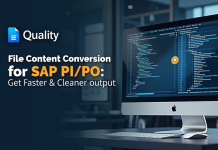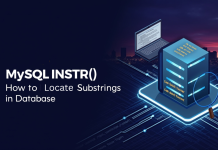Making a career shift into data science can be exciting and rewarding. The field offers excellent growth prospects, competitive salaries, and a chance to work on cutting-edge technologies. However, transitioning into data science from another domain is not always straightforward. Many professionals underestimate the challenges or approach the journey without a clear strategy.
This article identifies the most common mistakes career changers make when entering the field of data science, and more importantly, how you can avoid them. Whether you’re coming from business, marketing, engineering, or even the arts, understanding these pitfalls can help you make smarter, faster progress in your new career path.
Table of contents
- Introduction: Why Career Changers Are Drawn to Data Science
- 1. Underestimating the Learning Curve
- 2. Neglecting the Math and Statistics Foundation
- 3. Jumping into Projects Without Understanding the Business Context
- 4. Avoiding Collaboration and Networking
- 5. Relying Only on MOOCs Without Practical Application
- 6. Building a Portfolio Without Variety
- 7. Not Tailoring Resumes and Applications to Data Roles
- Conclusion: Transitioning the Smart Way
Introduction: Why Career Changers Are Drawn to Data Science
The growing demand for data-driven decision-making across industries has made data science one of the most attractive fields for professionals looking to pivot their careers. Many are drawn by its high impact, job stability, and the opportunity to solve real-world problems using technology and analytical thinking.
To support this transition, thousands of professionals are enrolling in data science courses to gain foundational knowledge in statistics, machine learning, and programming. However, learning the technical aspects is only one part of the equation. Career switchers often make missteps that can delay their entry into the field or limit their long-term growth. Let’s explore these missteps in detail.
1. Underestimating the Learning Curve
Mistake:
Many professionals assume that data science is primarily about learning a few tools like Python, R, or SQL. In reality, the field involves complex statistical thinking, business understanding, and the ability to derive insights from data.
How to Avoid It:
- Set realistic expectations. Recognize that mastering data science takes time, often 6–12 months of consistent effort.
- Build a structured learning path covering statistics, machine learning, data wrangling, and domain knowledge.
- Don’t rush. Focus on understanding concepts deeply, not just passing quizzes.
2. Neglecting the Math and Statistics Foundation
Mistake:
Some career changers focus solely on coding and ignore the essential statistical concepts that power data science models.
How to Avoid It:
- Prioritize learning the basics of probability, linear algebra, calculus, and hypothesis testing.
- Use practical examples to understand how statistics inform model selection and evaluation.
- Supplement coding tutorials with math-focused resources or sections in your data science course.
3. Jumping into Projects Without Understanding the Business Context
Mistake:
Building models without understanding the problem they’re solving often leads to over-engineered or irrelevant solutions.
How to Avoid It:
- Choose project ideas with real-world relevance (e.g., customer churn prediction, fraud detection).
- Always start a project by clearly defining the business problem.
- Learn how to present insights and recommendations to a non-technical audience.
4. Avoiding Collaboration and Networking
Mistake:
Career switchers sometimes learn in isolation, missing out on valuable feedback, mentorship, and opportunities that come from being part of a community.
How to Avoid It:
- Join online forums, Slack channels, or LinkedIn groups related to data science.
- Collaborate on open-source or Kaggle projects to gain real teamwork experience.
- Attend webinars, hackathons, or workshops to expand your network.
5. Relying Only on MOOCs Without Practical Application
Mistake:
Watching endless tutorial videos without applying the concepts leads to “passive learning,” which limits skill retention and confidence.
How to Avoid It:
- Apply every new skill to a mini-project or dataset immediately.
- Participate in data challenges or internships to gain practical experience.
- Focus on fewer courses, but go deep, ensure you complete hands-on assignments and capstone projects.
6. Building a Portfolio Without Variety
Mistake:
Some learners create portfolios with similar types of projects (e.g., only classification problems using scikit-learn), which don’t showcase the breadth of their skills.
How to Avoid It:
Include variety in your portfolio:
- A data cleaning and EDA (Exploratory Data Analysis) project
- A machine learning model (regression, classification, or clustering)
- A deep learning project (e.g., using TensorFlow or PyTorch)
- A dashboard or visualisation project using Tableau or Power BI
Also, document your work clearly on GitHub and explain your thinking in blog posts or case studies.
7. Not Tailoring Resumes and Applications to Data Roles
Mistake:
Using a generic resume or not translating prior work experience into data-relevant achievements is a common error.
How to Avoid It:
- Highlight transferable skills (problem-solving, analytical thinking, domain expertise).
- Quantify your impact where possible.
- Customise your resume for each application using keywords from the job description.
Conclusion: Transitioning the Smart Way
Switching careers into data science is a commendable decision, but it must be approached with planning, patience, and persistence. The most successful career changers are those who build a strong foundation, work on meaningful projects, stay connected to the community, and continuously reflect on their growth.
If you’re serious about making the leap, enrolling in data science certification courses can accelerate your transition by offering structured learning paths, expert guidance, and real-world projects. These programs are designed not only to teach tools but also to help you think like a data scientist.
By avoiding the common mistakes outlined above and investing your time wisely, you can enter the field with confidence and clarity, and set yourself up for long-term success in data science.











